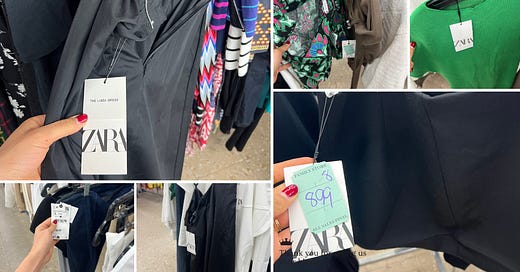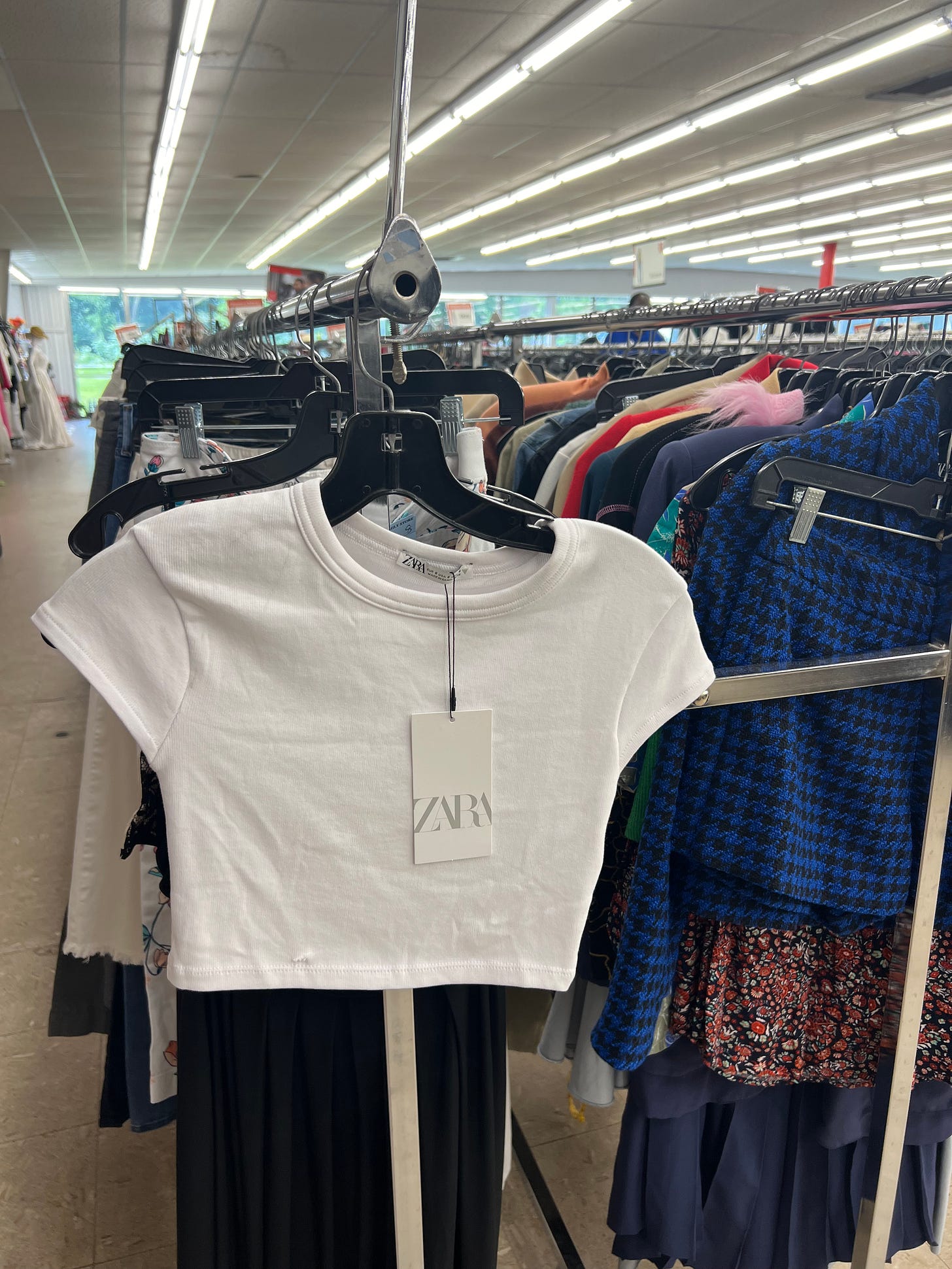Last week, I went to the Salvation Army in Colonie, NY. It's a short drive from my parents' house in Troy, where I grew up. This particular store was a sanctuary to me when I was younger. It's where some of my most prized secondhand pieces were found—pieces that taught me about personal style and that I could experiment with to learn about fabrics and past trends all on my own.
When I walked in, everything looked the same: yellowing floors made even more off-color by the fluorescent lighting. Dozens of messy racks scattered around the large space. I was excited as I walked toward the back to begin my hunt and reminisce about how I used to thrift before there were so many different and convenient ways to do it.
But something was off.
If you've been in a Salvation Army lately, I think you know what I'm going to write—every rack is filled with "new-with-tags" Zara pieces. Some of it was broken or stained, but for the most part, it was just out of style and awkward, with a pull here and there. While it's disheartening to see what once was a place to find unique pieces filled with trendy leftover fast fashion, my gut instinct was to be happy it wasn't ending up in a landfill. And after a quick search, I realized this had been a hack for people looking to get Zara even cheaper. Dozens of Reddit threads and TikTok videos are dedicated to all the NWT Zara finds at Salvation Army. In many ways, that's good.
But why is this even happening in the first place, and what does it mean for sustainability?
Well, to put it short, Zara (and most fashion brands) just makes too much clothing. In my book WORN OUT, you can read more about how Zara became the fast fashion behemoth that it is today, but the idea is that they make a new "collection" every single week, tweaking styles so they are constantly serving customers something new. What doesn't get sold has to go somewhere. Zara has a program that the brand says is for circularity where customers can send worn clothes to be donated to one of the brand's "partners," including the Red Cross and The Institute for Human Services. While Salvation Army isn't listed on the website, It's safe to assume that unsold and possibly returned clothing is also recirculated through this program and potentially makes its way to these stores. There is a Zara at the mall nearby so it might be even more direct in this instance.
Now, is this a huge deal? It depends on how we look at it. Of course, it's good for the clothing to go into stores where people can buy it for more affordable prices, keeping it out of the dumpster. The problem is that the poor quality of these materials and the subtleties of the broken elements or small stains will make it so that it will likely end up unwearable. Instead of getting a great pair of vintage jeans that will last for more and more years, these pieces likely will only last a few wears if any at all.
What's more, it's yet another signal that Zara is making too much and bloating the secondhand market with its pieces. What doesn't get sold at Salvation Army will inevitably still end up in landfills or global secondhand markets, too overwhelmed to deal with all the products (especially if they are damaged). Sure, it's a solid back-to-school hack that people should take advantage of if that’s what works for them, but states and countries need to make brands responsible for their excess inventory instead of dumping them into places where they may still not sell.
Reporting round-up!
I know it’s been a while since you’ve received THIS STUFF so thank you for sticking around! Here’s a little taste of what I was writing in the meantime.
On Running is growing rapidly. Can it do so sustainably? - VOGUE BUSINESS
Mara Hoffman Is Shuttering Her Namesake Label Exclusive - VOGUE RUNWAY
Everything You Need to Know About Fast Fashion - VOGUE
Counterfeit Fashion Is Harmful, and It Gets Worse During the Olympics - TEEN VOGUE
Some news!
I recently accepted a contributing role as Style Director with Teen Vogue. While I’m still doing various freelance projects, I’ve been back at the magazine for about a year and a half, covering maternity leaves (it was a Teen Vogue baby boom). Now, I’m working with brilliant he fashion and beauty team on overall coverage on the intersections of style, identity and of course politics.




